|
|
Post by CSM2014 on Jun 10, 2014 0:06:52 GMT
Hello. I am a newbie to this site and could really use some help. I inherited a reproduction of a supposed scottish long sword with trefoil terminations on the cross hilt (photo attached). Can you please provide any information/confirmation? 1) Did the Scots did in fact use swords with trefoil terminations such as on this sword? Is this an authentic repro? 2) Is is correct that such trefoils may be a rare variant and possibly precede the use of quatrefoils? 3) What is the estimated time period that such trefoil terminations were used? Approximate date of this sword? 4) Is there any printed resource that could confirm such information? Many thanks. CSM2014 Attachments:
|
|
|
|
Post by Lochinvar on Aug 28, 2014 13:34:57 GMT
One of the first swords I purchased as a teenager back in the early 1980s was the same as what you have there, which if I am not mistaken, was manufactured by Depreeka in India as one of their their first crude attempts to produce what was supposed to be a 16th century Scottish two-handed sword or "claymore". Here is what an authentic two-handed Scottish great sword of the 1500s actually looks like:  The down-sloping guard should actually terminate in quatrefoils rather than trefoils, and should appear more like a quartet of rings, rather than spatulate. Of all the mass produced Scottish two-handed great-swords, the manufacturer Hanwei is the one company that seems to get this detail correct, moreso than most of the other manufacturers and makers I have seen:  |
|
|
|
Post by LemuelTheLemur on Aug 28, 2014 13:58:24 GMT
I think I saw you post this on myarmoury, tbh if you can't get an answer there for historical related questions then you're unlikely to find one here  Possibly. I believe the quartrefoil terminals itself was not so universally common in Scotland during the middle age as one might believe, something more akin to the Albion Laird and Caithness guard might have been more the norm. It just so happens every maker is keen on making the quarterfoil longsword because it's unique and easily recognizable. I don't know of any scottish claymore's with trefoil terminals but that doesn't mean they didn't exist. As to whether your sword is an authentic repro of a trefoil claymore, I very much doubt it. In fact, I doubt that's even a trefoil terminal, to me it just looks like a very sloppily done quarterfoil. Sure. Trefoils were common throughout Europe (though not necessarily in sword designs). Approximate date of this would be between 1400 and 1600 roughly. Again I doubt you're sword is trying to have hipster trefoil terminals, I stand by my judgement that they're mishapen quarterfoils.  I would suggest having a look at the wiki page on claymores. |
|
|
|
Post by Lochinvar on Aug 28, 2014 14:59:37 GMT
I believe that the quatrafoils seen on the guards of Scottish two-handed great swords were something that evolved as a later style circa 1500. There are numerous examples of Scottish two-handed great swords with this style of guard: 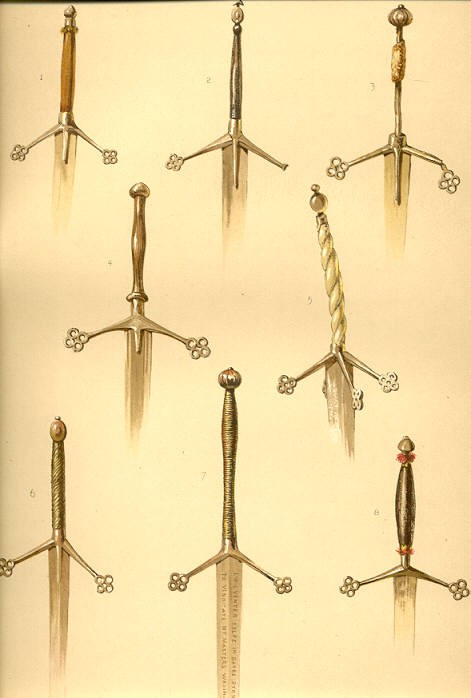 Claidheamh dà làimh, James Drummond Ancient Scottish Weapons, 1881.  "Hilt, Scottish Highland, late medieval blade German (Solingen or Passau), probably early 16th century. The iron hilt consists of a small wheel pommel, with the "hub" off-centre towards the blade, and a longitudinally-faceted quillon-block supporting a pair of long quillons of flattened-hexagonal section inclined towards the blade, between which is a pair of square-ended langets flanking the blade. Each quillon ends in an open-work quatrefoil formed of four short tubes welded together." - Culloden The Swords & the Sorrows, National Trust For Scotland, 1996 Whitelaw sword, circa 1530:  Claymores on display at The Culloden Visitors Center, near Inverness:   Claidheamh dà làimh at the Kelvingrove Museum, Glasgow. No: E.1939.65.ht. Highland claymore, c. 1560-70 (The British Museum)  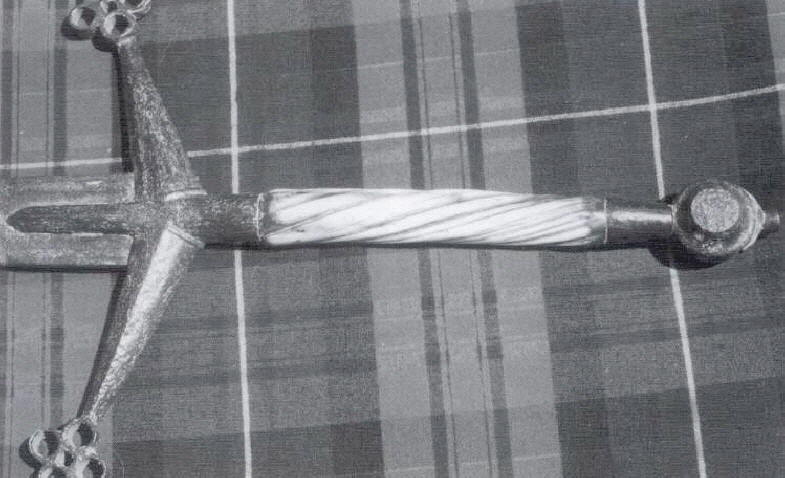 Scottish hand & half broadsword, c. 1525, with a narwhale grip and a 40" blade. James Forman Collection - Swords & Sword Makers of England & Scotland, Richard Bezdek. 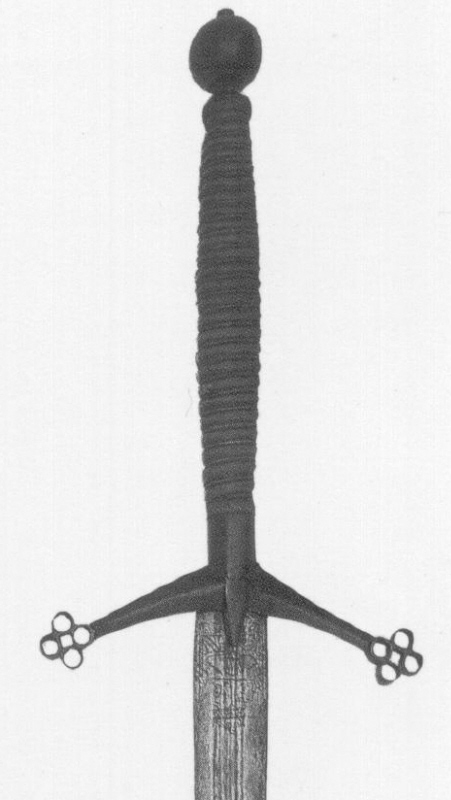 Photo: Highlanders: A History of the Highland Clans, Fitzrot MacLean, 1995. The "Noel Paton" claymore, c. 1550 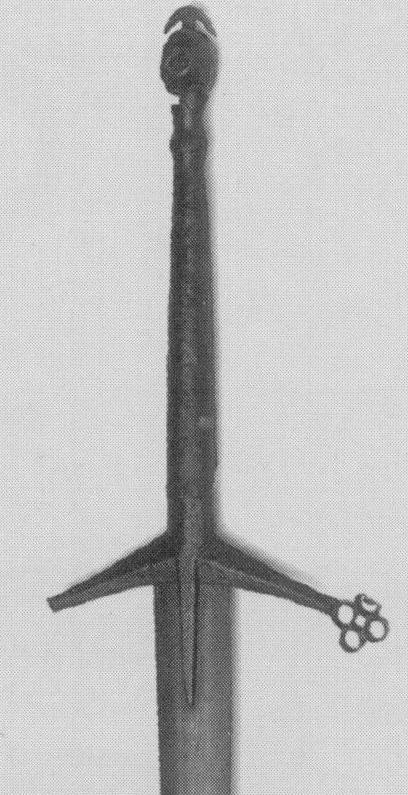  Claymore at the Tower of London, 16th century. IX-912, photo: European Swords & Daggers in the Tower of London, A.R. Dufty, 1974 Claymore, c. 1590 (this is the original which Paul Chen reproduced for the Hanwei claymore) : 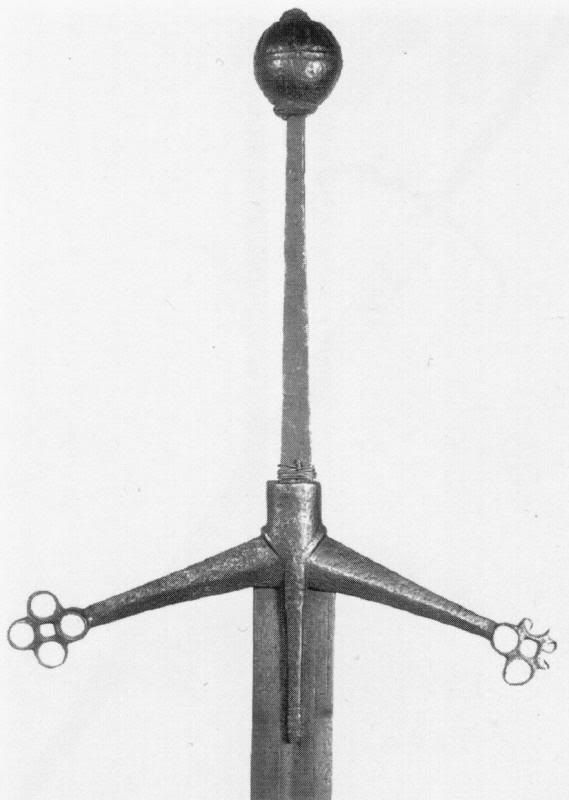 |
|
|
|
Post by LemuelTheLemur on Aug 28, 2014 15:20:42 GMT
huh, guess I was wrong  Thanks for posting all the reference images! |
|
|
|
Post by Lochinvar on Aug 28, 2014 17:16:22 GMT
|
|

